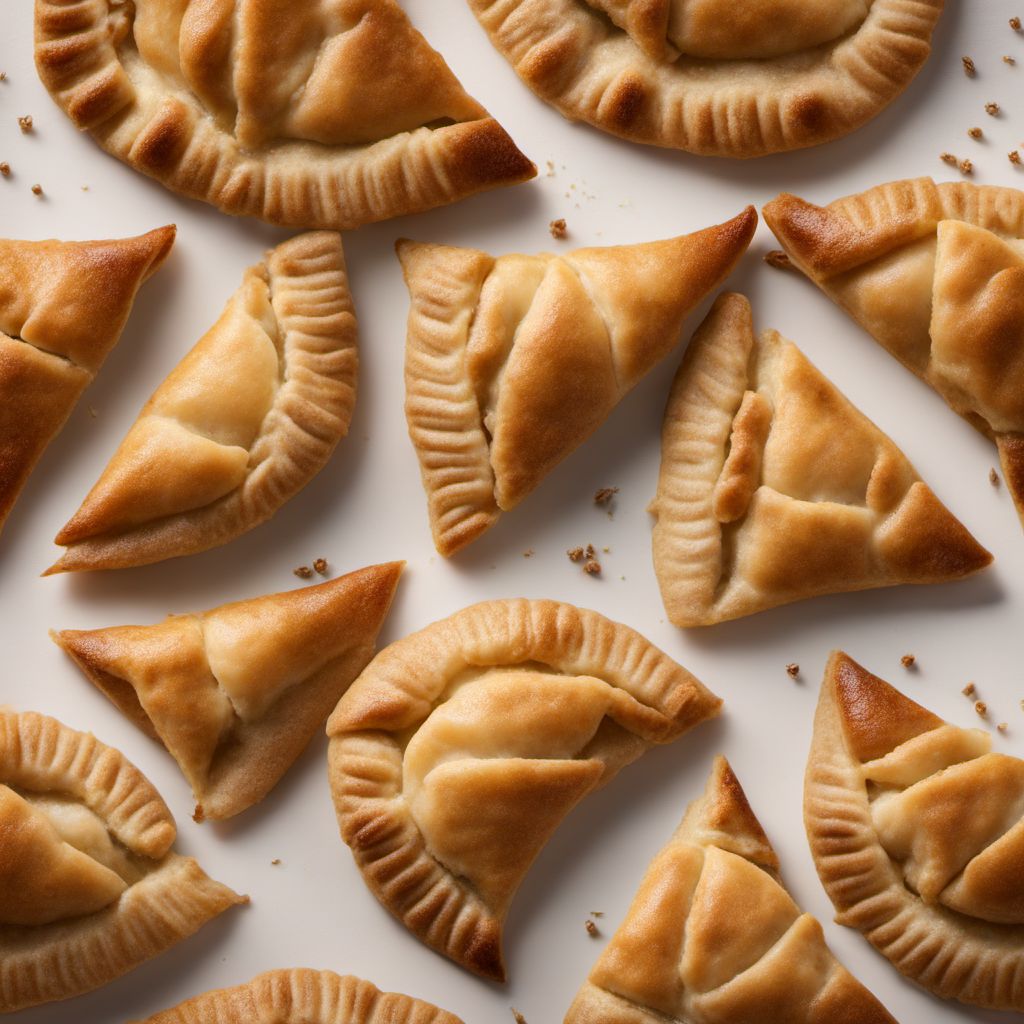
Ingredient
Flat bread-based pastry
Flaky Delights: Exploring the World of Flat Bread-Based Pastries
Flat bread-based pastries are made by enclosing various fillings within a thin layer of dough, which is then baked or fried to perfection. The dough used can vary, ranging from puff pastry, which is made by repeatedly folding and rolling layers of dough and butter, to phyllo dough, which is paper-thin and delicate. These pastries can be savory or sweet, and their fillings can include meats, vegetables, cheeses, fruits, or even chocolate. The resulting pastries are known for their flaky, buttery crusts and the delicious contrast between the crispy exterior and the tender interior.
Origins and history
The origins of flat bread-based pastries can be traced back to ancient civilizations such as the Egyptians, Greeks, and Romans, who all had their own versions of these delectable treats. Puff pastry, for example, is believed to have been developed in ancient Egypt, while phyllo dough has its roots in Byzantine cuisine. Over time, these pastries spread across different cultures and regions, each adding their own unique twists and fillings. Today, flat bread-based pastries are enjoyed worldwide, with variations like samosas in India, empanadas in Latin America, and spanakopita in Greece.
Nutritional information
Flat bread-based pastries can vary greatly in their nutritional content depending on the fillings and dough used. They can be a good source of carbohydrates, proteins, and fats, but they can also be high in calories and saturated fats. It is important to consider the specific ingredients and portion sizes when assessing the nutritional value of these pastries.
Allergens
Flat bread-based pastries may contain allergens such as wheat, dairy, eggs, and nuts, depending on the specific recipe and fillings used.
How to select
When selecting flat bread-based pastries, look for ones that have a golden-brown color and a flaky, crisp exterior. The pastry should be evenly cooked and free from any burnt or undercooked spots. If purchasing from a bakery or supermarket, opt for freshly baked pastries or those stored in a temperature-controlled display. If making your own, ensure that the dough is properly chilled and rolled out to the desired thickness.
Storage recommendations
To maintain the freshness and quality of flat bread-based pastries, store them in an airtight container or wrap them tightly in plastic wrap. They can be kept at room temperature for a day or two, but for longer storage, refrigeration is recommended. Before consuming, reheat the pastries in an oven or toaster oven to restore their crispness.
How to produce
Amateur bakers can produce flat bread-based pastries by following recipes that guide them through the process of making the dough, preparing the fillings, and assembling the pastries. With practice and attention to detail, anyone can master the art of creating these delicious treats in their own kitchen.
Preparation tips
When working with flat bread-based pastries, it is important to handle the dough gently to preserve its flaky texture. Keep the dough and fillings chilled until ready to use, as this helps prevent the butter in the dough from melting prematurely. When assembling the pastries, ensure that the edges are sealed properly to prevent any leakage during baking. Brushing the pastries with an egg wash before baking can give them a beautiful golden color.
Culinary uses
Flat bread-based pastries are incredibly versatile and can be used in a variety of culinary creations. They can be filled with savory ingredients like meats, cheeses, and vegetables to make appetizers, main dishes, or snacks. Sweet fillings such as fruits, chocolate, or custard can be used to create delectable desserts. These pastries can be baked, fried, or even grilled, offering endless possibilities for creative and delicious dishes.
Availability
Flat bread-based pastries are commonly available in various forms and names across different regions and cuisines. They can be found in bakeries, supermarkets, and specialty stores that offer international or ethnic foods. The specific types and variations of flat bread-based pastries may vary depending on the cultural influences and culinary traditions of each region.
More ingredients from this category

Kringles
"Delightful Danish Pastries: Exploring the World of Kringles"
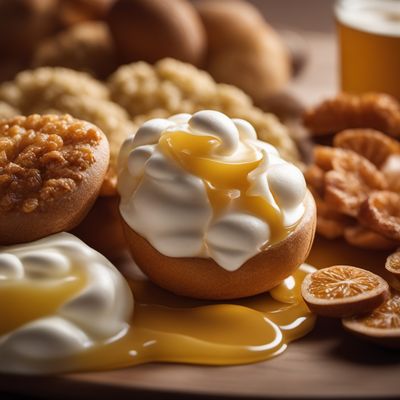
Buns
The Pillowy Delights: Exploring the World of Buns
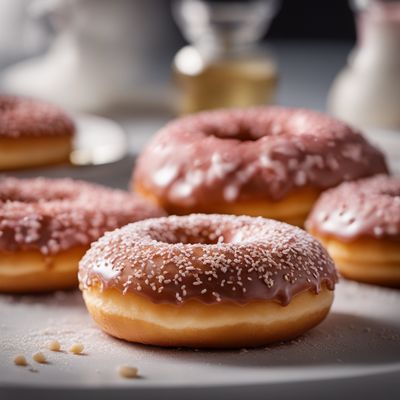
Doughnuts-berliner
The Irresistible Delight of Berliner Doughnuts

Croissant
The Flaky Indulgence of Croissant
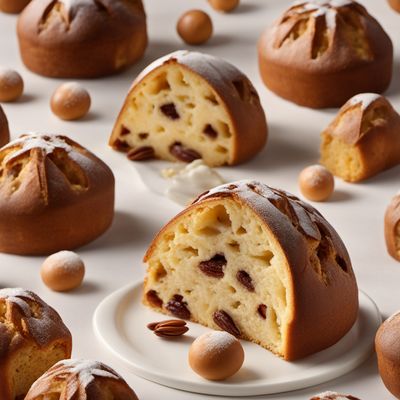
Brioche type products
The Art of Buttery Indulgence

Fried dough sweet
Crispy Delights: Exploring the World of Fried Sweet Dough
Recipes using Flat bread-based pastry » Browse all
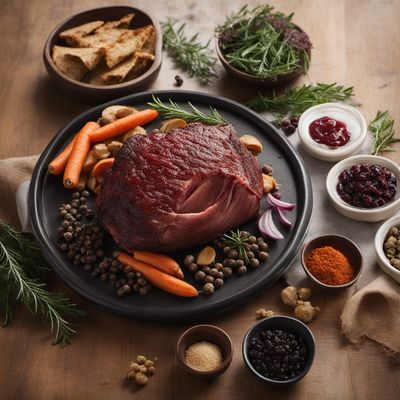
Smoked Sheep's Head with Traditional Norwegian Accompaniments
Norwegian Delicacy: Smoked Sheep's Head with Authentic Flavors
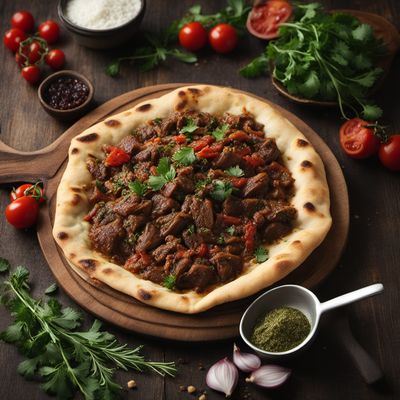
Turkish Lamb Flatbread
Savory Delight: Turkish Lamb Flatbread with a Twist

Malawian-style Stuffed Flatbread
Savory Delight: Malawian Stuffed Flatbread with a Twist
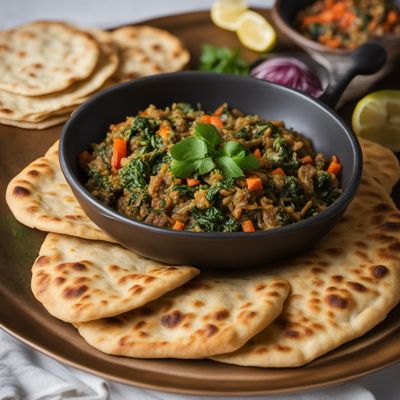
Afghan-inspired Stuffed Flatbread
Savory Delights: Afghan-inspired Stuffed Flatbread
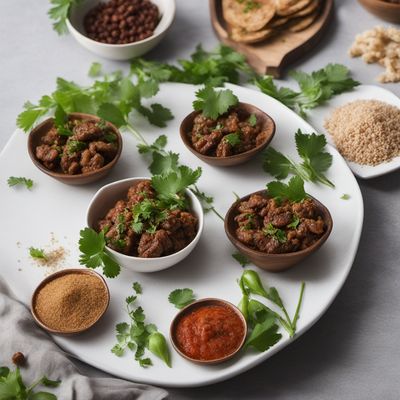
Somali-style Canapés Chasseur
Savory Somali Delights: Canapés Chasseur with a Twist

Phaldari Kofta Curry
Deliciously Nutty Vegetable Kofta Curry
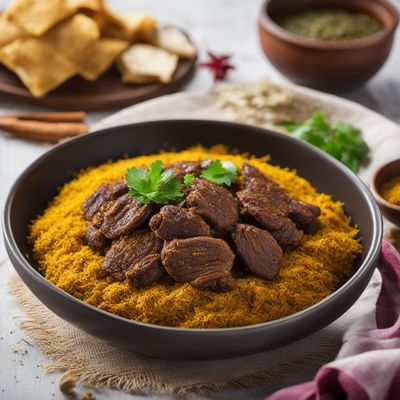
Kurdish Cincin with Spiced Lamb
Savory Delight: Kurdish Cincin Infused with Spiced Lamb

Lobiani Rendang
Savory Bean-Stuffed Flatbread with Malaysian Rendang Twist

West African Baleada
Savory West African Stuffed Flatbread
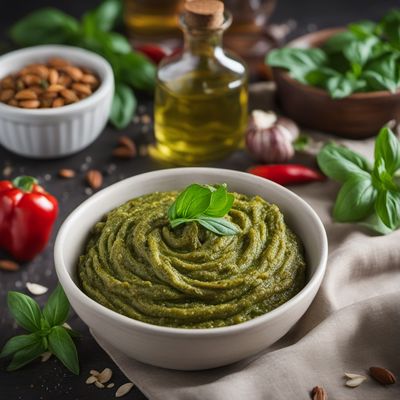
Kosovan Pesto alla Trapanese
Savor the Flavors of Kosovo with Kosovan Pesto alla Trapanese
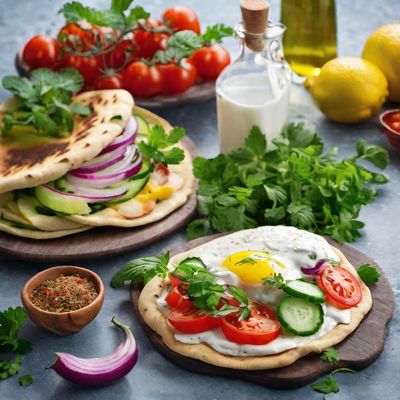
Arab-Style Breakfast
Aromatic Morning Delight: Arab-Inspired Breakfast
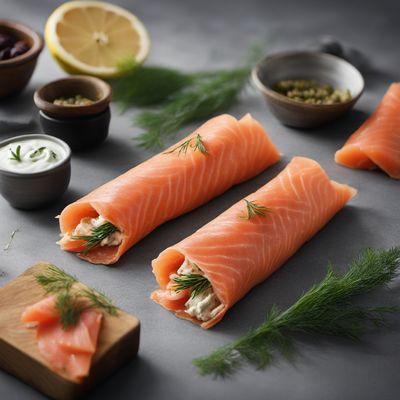
Lefserull med røkelaks (Norwegian Smoked Salmon Wraps)
Scandinavian Delight: Smoked Salmon Lefse Rolls